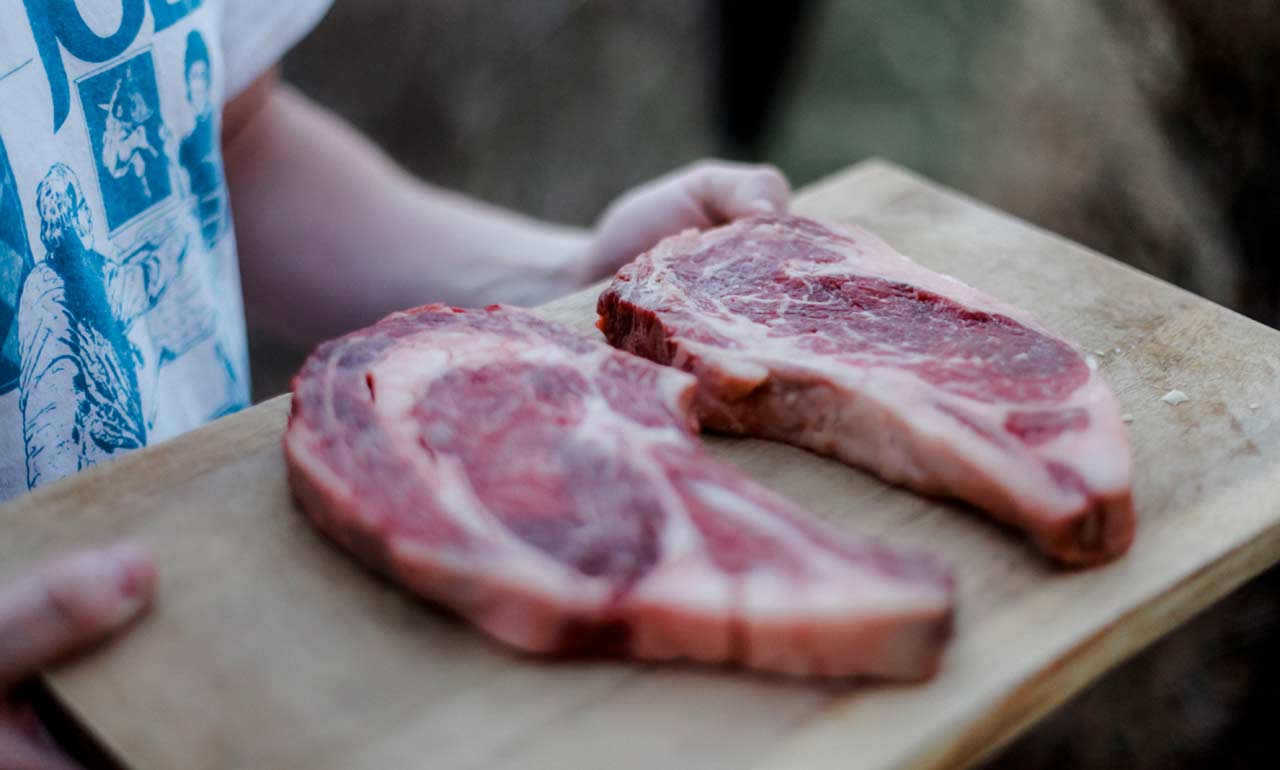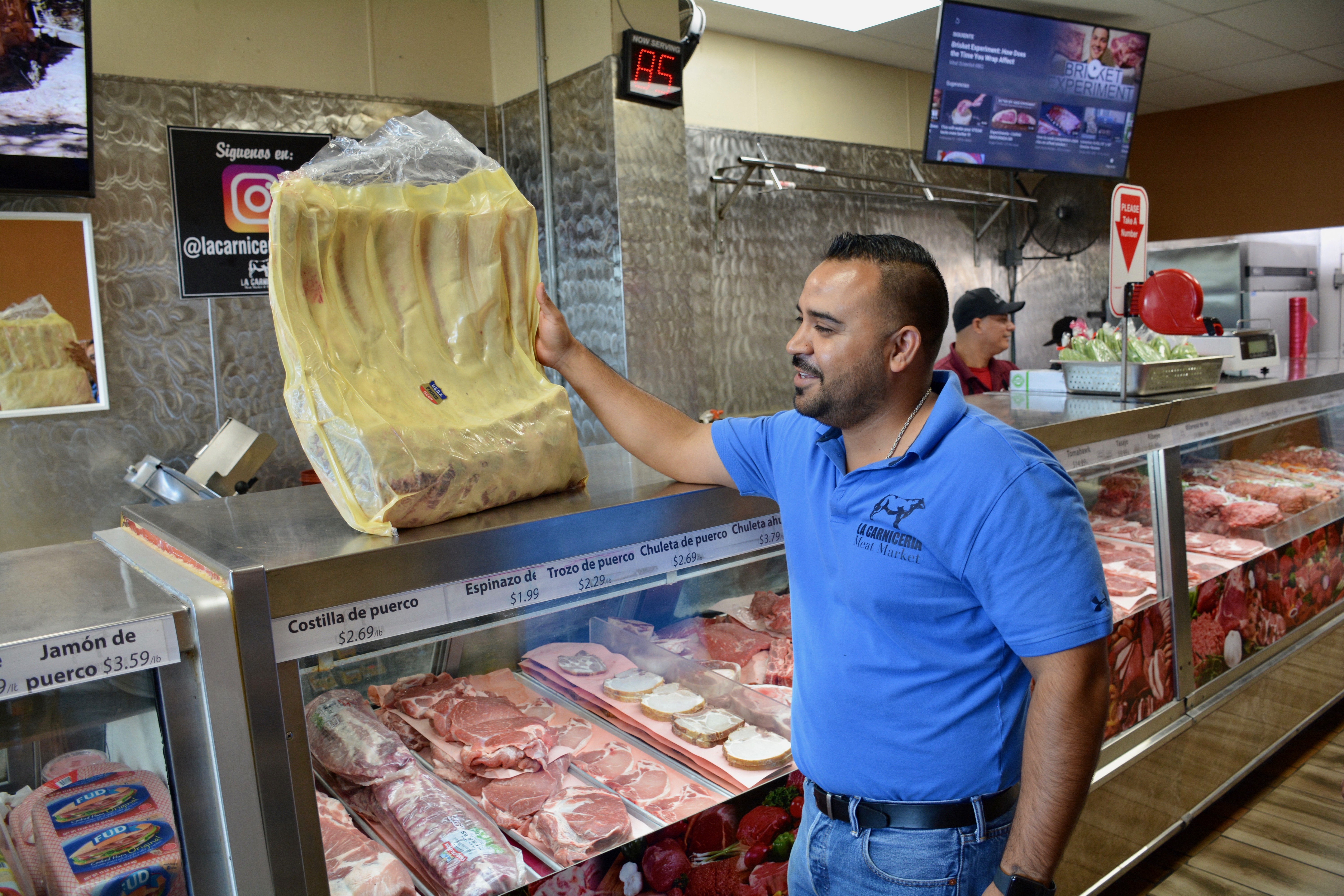The Significance of Freshness: Just How to Examine Meat at the Market
The evaluation of meat quality is a vital facet of food safety and security and top quality that typically goes ignored by consumers. By using specific visual assessment strategies and analyzing aroma, buyers can determine the top quality of meat available at the market. Additionally, understanding packaging tags and checking expiration dates are crucial practices that even more improve notified buying decisions.
Visual Evaluation Methods
Aesthetic evaluation strategies are important for analyzing the freshness of meat, as they offer instant, evident indications of quality - bagley meat market edwardsville il. Secret visual cues consist of color, texture, and the existence of any unusual indications. Fresh meat commonly shows a brilliant, lively color that differs according to the kind; as an example, beef ought to show a crimson color, while pork displays a pinkish tone

The texture of the meat is another crucial variable. Fresh meat should really feel strong to the touch, with a small spring-back when pushed.
Intramuscular fat, or marbling, contributes to taste and tenderness, and fresh meat must show little streaks of fat interspersed throughout the muscle. Inspecting for any kind of foreign bits or unusual developments can better aid guarantee meat is fresh.
Scent and Fragrance Analysis
An important part in evaluating the freshness of meat is the evaluation of scent and fragrance, which can give significant insights right into its high quality. Fresh meat typically gives off a mild, positive fragrance that shows its natural state - bagley meat market edwardsville il. Any deviation from this norm warrants interest, as unpleasant or overpowering odors typically indicate putridity or contamination

When buying meat, take the time to lean closer and breathe in carefully. By developing your capability to assess scent and aroma, you can significantly enhance your ability to pick top notch, secure meat for your culinary needs.
Understanding Packaging Labels
Proper understanding of packaging tags is essential for consumers to make informed choices pertaining to the freshness and safety of meat items. Packaging labels provide vital information that can considerably influence buying choices. Crucial element to take a look at include the item name, type of meat, and whether it is fresh, icy, or previously frozen.

Another crucial element of product packaging tags is the presence of accreditations or high quality marks. These can symbolize adherence site here to specific criteria worrying animal welfare, organic techniques, or sustainability. Customers ought to likewise look for any included ingredients, such as preservatives or fillers, which might influence nutritional selections.
Monitoring Expiry Dates
Expiry dates are a crucial element in assessing the freshness and safety of meat items, giving customers with essential info concerning the item's longevity. These dates commonly suggest the timeframe throughout which official source the meat is expected to preserve its highest quality and safety and security when kept under correct conditions.
It is essential for customers to recognize the distinction in between "sell by," "use by," and "ideal prior to" days. The "sell by" date is planned for merchants, suggesting when the item must be sold or gotten rid of from racks. The "usage by" day is a lot more important for safety and security, as it represents the last date advised for using the item while guaranteeing optimum high quality (bagley meat market edwardsville il). The "ideal before" day, while pertaining to high quality, does not necessarily reflect food security and might enable for usage hereafter date if the meat reveals no indicators of wasting.
When inspecting expiry days, always inspect the product packaging for any type of signs of damages or incorrect storage. Even if the date is within array, various other variables such as color, scent, and appearance ought to likewise be assessed to guarantee that the meat is secure and certainly fresh for intake.
Selecting the Right Butcher
When picking a butcher, it is necessary to consider variables such as customer, quality, and credibility service. A reliable butcher should focus on sourcing top quality meat, ideally from regional ranches that practice sustainable and moral farming approaches. To content evaluate high quality, ask about the butcher's distributors and their techniques, in addition to any certifications they might hold.
Online reputation plays a considerable function in selecting a butcher. Study on-line evaluations and seek referrals from close friends or family members to identify those known for extraordinary products and solution. A reputable butcher is often an energetic member of the neighborhood, involving with consumers and giving useful information concerning their offerings.
Customer support is just as crucial. A well-informed butcher must want to address questions, give cooking suggestions, and offer customized referrals based on your preferences. A friendly and approachable temperament can improve your buying experience and build an enduring partnership.
See the store to assess sanitation, company, and the overall atmosphere. A well-kept butcher store reflects a dedication to quality and safety. By thinking about these aspects, you can with confidence choose a butcher that will regularly fulfill your meat needs.
Verdict
Making sure meat freshness at the market is important for maintaining quality and safety. Focusing on freshness serves as a cornerstone of responsible meat usage.

Making sure meat freshness at the market is crucial for preserving quality and security.